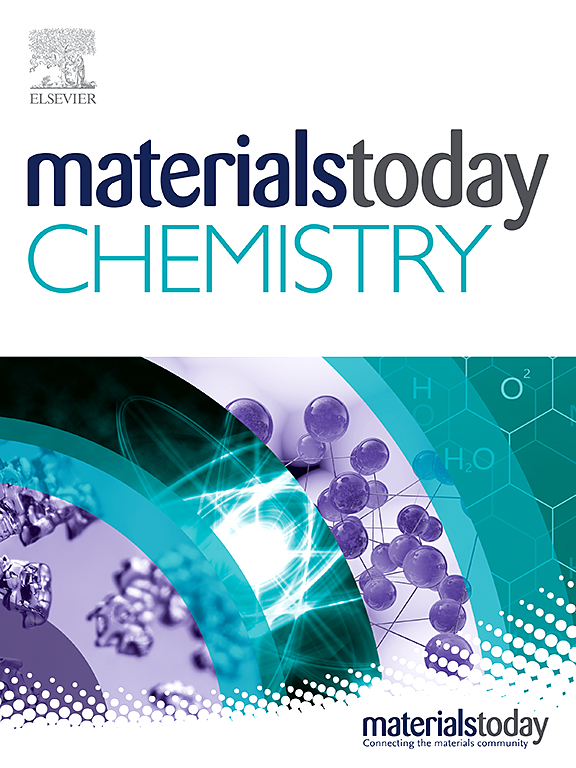通过双功能域工程设计机械坚固防污涂层的新策略
IF 6.7
2区 化学
Q1 CHEMISTRY, MULTIDISCIPLINARY
引用次数: 0
摘要
海洋结构上的生物污损问题对经济和生态都有重大影响,因此有必要开发有效耐用的防污涂料。传统的有机防污涂料在恶劣的海洋环境中往往难以保证机械坚固性,使其变得脆弱且极易磨损。为了应对这些挑战,我们提出了一种新颖的 "双功能域工程 "策略,用于设计坚固耐用的防污涂层,该策略结合了铁基非晶层的优异机械强度和掺入有机物的高防污功效。硬域由铁基无定形微驼峰组成,提供了一个坚固的框架,提高了涂层的机械耐久性。相比之下,软域由注入了氧化铜和 4,5-二氯-2-辛基-4-异噻唑啉-3-酮(DCOIT)的环氧树脂组成,通过可控的防污剂释放提供双重防污功能。通过针对、、和藻类的实验室测试以及实际海洋现场测试(150 天)对防污性能的评估表明,与纯无定形涂层相比,双功能域工程涂层(简称 HSR 涂层)可显著降低细菌和藻类的附着力(抗性接近 100%)。机械耐久性测试(包括磨损和侵蚀实验)强调了 HSR 涂层出色的耐磨性。重要的是,HSR 涂层在经过 1000 次磨损循环后仍能保持其出色的防污性能,这凸显了它在恶劣条件下长期应用于海洋的潜力。这项研究为设计既能抵御恶劣工作环境又能有效防止生物污染的坚固防污涂层奠定了基础。本文章由计算机程序翻译,如有差异,请以英文原文为准。
A novel strategy for design of mechanically robust antifouling coatings via bifunctional domain engineering
The issue of biofouling on marine structures carries significant economic and ecological implications, necessitating the development of effective and durable antifouling coatings. Traditional organic antifouling coatings often struggle with mechanical robustness in harsh marine environments, making them fragile and highly susceptible to abrasion. To address these challenges, we propose a novel “bifunctional domain engineering” strategy for designing robust antifouling coatings that combines excellent mechanical strength of a Fe-based amorphous layer and high antifouling efficacy of an incorporated organics. The hard domains consist of Fe-based amorphous micro humps, providing a sturdy framework that enhances the coating's mechanical durability. In contrast, the soft domains comprise epoxy resin infused with CuO and 4,5-Dichloro-2--octyl-4-isothiazolin-3-one (DCOIT), offering a dual-action antifouling function via controllable antifouling agent release. Evaluation of antifouling performance by lab tests against , , and algae and practical marine field tests (for 150 days) demonstrates significant reductions in bacterial and algal adhesion (nearly 100 % resistance) with the bifunctional domain engineered coating (referred to as HSR coating), compared to pure amorphous coating. Mechanical durability tests, including abrasion and erosion experiments, underscore the HSR coating's excellent wear resistance. Importantly, the HSR coating maintains its outstanding antifouling properties even after 1000 abrasion cycles, highlighting its potential for long-term marine applications in harsh conditions. This study lays the groundwork for design of robust antifouling coatings capable of withstanding the harsh operating environments while effectively combating biofouling.
求助全文
通过发布文献求助,成功后即可免费获取论文全文。
去求助
来源期刊

Materials Today Chemistry
Multiple-
CiteScore
8.90
自引率
6.80%
发文量
596
审稿时长
33 days
期刊介绍:
Materials Today Chemistry is a multi-disciplinary journal dedicated to all facets of materials chemistry.
This field represents one of the fastest-growing areas of science, involving the application of chemistry-based techniques to the study of materials. It encompasses materials synthesis and behavior, as well as the intricate relationships between material structure and properties at the atomic and molecular scale. Materials Today Chemistry serves as a high-impact platform for discussing research that propels the field forward through groundbreaking discoveries and innovative techniques.
 求助内容:
求助内容: 应助结果提醒方式:
应助结果提醒方式:


